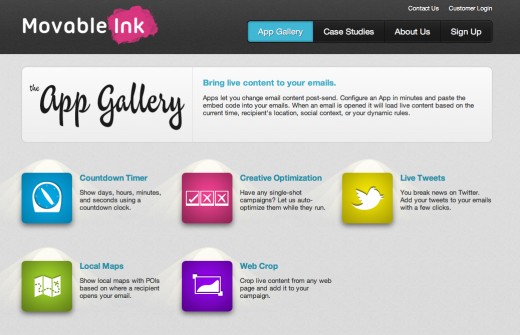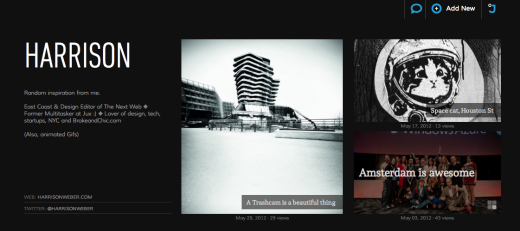
It has only been a year and a half since I first moved to NYC, and since that time the scene itself lured me away from school, into hackathons, a startup job and now finally here at The Next Web. This all happened organically, where I changed from being a designer and musician into a full-blown geek, only because of how infectious the tech scene truly is here in New York.
Of course, the city drags you in and tries to spit you out, just as it does with startups fighting for funding, talent and space, but if you manage to survive the struggle is worth it. That’s the spirit here in NY — it’s equal parts love and aggression, where the traditionally rowdy city attitude merges with night-owl programmers, investors and scrappy entrepreneurs.
The spaces, places and meetups
The “Silicon Alley” nickname given to NYC once just represented Broadway, where a handful of impressive startups and incubators could be found from south Midtown and Flatiron all the way to the bottom of Soho, just before Chinatown. Now, NY’s tech scene reaches far beyond a single street or alley, with booming communities building up in Brooklyn, and plenty more spread out across Manhattan.
Back in August of last year, our own Courtney Boyd Myers covered The 5 Coolest Coworking Spaces in New York City, which featured the likes of General Assembly, a coworking and education powerhouse located just around the corner from a number of notable investors at 902 Broadway in the Flatiron District. Then there’s WeWork Labs, which has since undergone a massive expansion in NY and opened up offices in San Francisco.
Those two companies aren’t nearly alone, either. There’s New Work City, which Union Square Ventures’ Fred Wilson calls the “grandaddy” of NYC coworking spaces as it has been running for the past 4 years, the relaxed Dogpatch Labs, which has offices in Cambridge and San Francisco as well, Projective Space (formally known as SohoHaven), Hive at 55, Tech Space, Greendesk, Greenspaces, Coworking Brooklyn and WeCreateNYC. Then there’s a decently large list of accelerators and incubators, including ER Accelerator, the famed TechStars NY, which is about to graduate its latest class of startups, Betaworks, Dreamit Ventures and Founder Labs — just to name just a few.
So what’s changed in all these places since last year? Every single one of them is way harder to get into. Not only is space tight, but the competition is grueling, which means only the best survive. All in all, this represents much of what’s happening in New York. Of course, in a high-risk startup environment there will be flops, but there have also been enough success stories to start a mildly large encyclopedia about them. Best of all, the scene here is still growing.
Dave Tisch, Managing Director of Tech Stars NY, spoke to us about his thoughts on NY’s tech scene in general:
The growth of the NYC tech community has been well documented, that said, there are some major pieces that continue to go overlooked. The non-tech community in NYC and the surrounding communities are not over-saturated with beta testing, and represent such a variety of demographics, each subway stop is the home to a different community, that testing your product here is a unique advantage for many startups.
The density and variety of businesses are also a tremendous asset the city has to offer. And the general and genuine support of the startup community for each other here I think stands out. We are all in this together. I said previously, but I believe there will be some very big exits this year in NYC, which will help advance the ecosystem even further.
NY Tech Meetup, which is packed with nearly 24,000 members, is so popular that it leaves designers, developers and entrepreneurs refreshing the monthly ticketing page moments before tickets go live (and sell out). This meetup in particular has done so much in uniting the community as a single entity, and is also the same meetup that brought together a massive protest against SOPA, which we of course attended. Now, NYTM isn’t the only kid on the block, either, there’s also NY Enterprise Tech Meetup, countless developer gatherings and Brooklyn-based Hacker Hours. Believe me when I say, I’m leaving a ton off this list.

Jessica Lawrence, the Managing Director of NY Tech Meetup, told TNW:
New York’s technology community has been growing and maturing rapidly. Companies that started here a couple of years ago, and moved away because they didn’t feel the ecosystem was quite ready to support them, are moving back because everything they need is now here.
A recent study by the Center for an Urban Future reported that New York was the only region in the country to see growth in VC deals between 2007 and 2011. The increased funding flowing into the city, the flourishing support network found through Meetup groups like NY Tech Meetup and over 299 other tech-related groups, the growing access to technology and entrepreneurship education, the increased accessibility to startup-friendly office space, a city government that makes technology a priority, unique access to the centers of industry in areas like finance, fashion, media, publishing, and advertising, and a community that is collaborative and supportive, have all contributed to making New York the center for technology that it has become.
Talent drought
There really is a ton of hardworking talent ready and waiting for companies in NY, the only problem is, this talent isn’t as tech-heavy as it could be, which means sales, marketing and design needs are all covered, but finding talented developers can feel like a nightmare. In fact, it’s such a problem that nearly every time I sit down for an interview, I’m asked if I know anyone looking for work.
What does this mean? It means that developers the world over have jobs waiting for them in NY. It also means that NY entrepreneurs better keep this in mind ahead of time. In the future, this may not be so much of a problem thanks to the incoming tech university on Roosevelt Island (shown below), and countless initiatives by Mayor Bloomberg and NY’s Chief Digital Officer Rachel Sterne, but for the time being it’s an issue.
http://www.youtube.com/watch?feature=player_embedded&v=Js6yF2nEyQI
TNW spoke with Ben Lerer of Thrillist and Lerer Ventures, about NY’s strengths and weaknesses:
Everyone knows the challenges: building in NY is expensive and there’s a hiring challenge for NY Startups. As far as the businesses as a whole, I think if you’re starting a company, it’s a great place to start, there’s a ton of young talent, but there’s a lot of competition for that smaller, more specialized talent pool.
Ben Lerer also noted the importance of the big media ties here in NY, which can’t be found elsewhere. And as we hinted at above, there is an abundance of top-notch design talent all over the city, which may prove to be a major strength as high-quality design continues to grow in importance for consumer-focused and enterprise-targeted companies.
The City
While we’re hesitant to endorse any politician, when it comes to NYC Mayor Bloomberg’s support of the tech scene, there isn’t much more he could be doing to champion the city. Just to name a few initiatives, there’s the BigApps NYC competition, NYC’s ambitious open data policy, the move to bring WiFi and cellular reception into our beloved, sticky subway stations, the city’s first green hackathon Reinvent Green, and the Made in NY Digital Map, which helps NY Tech Startups find talent all across the city.
From Mayor Bloomberg, on the city’s creation of the Made in NY Digital Map via NYC’s Tumblr:
New York City is the place to be if you’re a growing tech startup. Our tech companies are looking for talent, and we want to make sure that everyone – no matter where they live today – knows about these jobs and is able to apply for them.
These are simply the latest of many efforts New York has made to tap into its growing tech and startup scene, and we’ll undoubtably see many more. No city government is without its flaws…but there are plenty of reasons to be impressed at the moment.
Startups to Watch
Back in early 2011, TNW shared our list of 11 New York City startups to watch in 2011, which included the likes of GroupMe. Before that, we brought together a list of 20 New York startups to watch in 2010, which included the now very well known Gilt Groupe and Kickstarter.
To avoid turning this into an encyclopedia, we’re only listing a handful of the most promising new companies as of late. If you think we missed something important, definitely share it in the comments below.
Folio: Folio is a platform for designers, illustrators, developers and creators to market and sell their digital content. Currently, supported file types include just about anything you can create in Photoshop or Illustrator such as PSD, EPS, AI, JPG, PNG, TIFF, PDF. In the future, the marketplace will open up to all digital assets including 3D models, motion graphics, audio content, photography, financial models, MS Word Templates, drum beats, WAV files, audio loops and even snippets of code. You can read our full review here.

SinglePlatform: After spending 10-years leading NYC’s online delivery service Seamless, founder Wiley Cerilli launched SinglePlatform in January 2010, to ease restaurants into the next course of internet marketing and social media. Restaurants provide the service with their information like menus, photos, events and specials through an easy-to-use portal and SinglePlatform updates it across their hundreds of publishing partners including hotels, city guides, restaurant review sites and application developers.
Movable Ink: This startup turns your email into a marketing platform that personalizes live content to the recipient’s location, current time and social context. Its vision is to make emails as rich and realtime as the web, and despite how much I hate email, Movable Ink is remarkable in its execution.

Wander (no, not that Wander): This startup has generated enough buzz to shake a stick at, despite still being in “mystery mode,” as our own CBM called it. In April, Wander raised $1.2 million from NextView Ventures, Google Ventures, SoftTech VC, SV Angel, Collaborative Fund, Red Swan and TechStars to fund its future growth and hire a solid team. The official Wander platform will debut the 2nd week of June. Stay tuned.
Jux: This highly visual blogging platform has been on our radar since August of last year, and continues to grow more and more beautiful every day (you can see mine here). We’ve already taken a close look at what Jux has to offer, and the simple blogging platform keeps on growing, adding HMTL5, iPhone and Instagram support along the way. As TNW’s Courtney Boyd Myers pointed out, while there are similarities to Tumblr, Jux veers away from the run of the mill Tumblelogs by focusing on showcasing your own work, rather than interesting images from around the web. Disclosure: I formerly worked with Jux.

Fancy Hands: One of our favorite services in the personal assistance space, Fancy Hands is dead simple to use, and the results you get back are solid. Unlike TaskRabbit, you’re not going to find people to pick up groceries for you with Fancy Hands, but if you need someone to tell you how many dog parks there are in San Francisco and where they are, the service might be for you. Data collection is its strong suit, and the service can even make appointments for you in a pinch for a variety of things. Read our full review here.
Codecademy: This site bills itself as “the easiest way to learn how to code”. The Y-Combinator bred, New York City based company teaches people to code through free interactive instruction. The company has made massive waves this year and even received attention from the White House for its Summer Jobs + program.

NewsCred: This startup is taking a two-birds, one stone approach to fixing the current news model by delivering existing, high quality news content to paying brands and publishers. NewsCred’s licensing platform connects brands like Orange Telecom and Lenovo as well as publishers like Yahoo and New York Daily News, with articles, photos and videos from over 700 news sources that it deems high-quality. Sources range from international newspapers to bloggers and online magazines like The Economist, Forbes, Telegraph, The Guardian, McClatchy/Tribune Newspapers, Bloomberg, Reuters and the LA Times.
Consmr: To put it simply, Consmr is like Yelp for all consumer packaged goods. While there are hundreds of review sites for movies, restaurants, electronics, video games, etc, there are no definitive go-to sites for reviews of everything else; in fact it remains one of the few categories lacking a online social platform. Until now. Consmr is a resource for reviews and social sharing on the products you typically find at a grocery store or drug store – from beverages to frozen foods to skin care. Read our full review here.

Triple Lift: Triple Lift is an enterprise marketing platform for Pinterest, and as social image-based content grows, the young company is poised to do very well in this space. In short, this may be the next Buddy Media and is worth keeping an eye on.
All in all, this merely scratches the surface of the emerging tech scene and community in New York City. And with all of its strengths, weaknesses, hurdles and ambition, there’s no doubting that a massive amount of impressive work is coming out of this city.
There isn’t much purpose in comparing NY to the Valley, for me at least, and it’s getting to the point where the city won’t ever even need to nod back to California. It’s nearly a scene of its own now, with distinct abilities that result in something the whole world needs — growth, jobs and promise.
What are your thoughts on the current state of NYC’s tech scene? We’re all ears.
Get the TNW newsletter
Get the most important tech news in your inbox each week.




